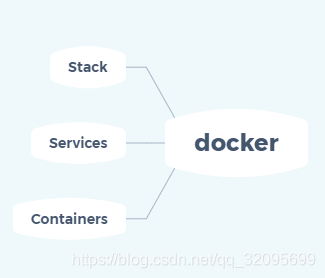制作镜像
https://www.cnblogs.com/linjiqin/p/8669360.html
docker tag
https://www.cnblogs.com/pzk7788/p/10180919.html
docker tag 用于给镜像打标签,语法如下:
docker tag SOURCE_IMAGE[:TAG] TARGET_IMAGE[:TAG]① 比如我现在有一个 centos 镜像:
[root@localhost ~]$ docker images
REPOSITORY TAG IMAGE ID CREATED SIZE
centos latest 1e1148e4cc2c 2 weeks ago 202MB② 我对 centos 进行开发,开发了第一个版本,我就可以对这个版本打标签,打完标签后会生成新的镜像:
[root@localhost ~]$ docker tag centos centos:v1[root@localhost ~]$ docker images
REPOSITORY TAG IMAGE ID CREATED SIZE
centos latest 1e1148e4cc2c 2 weeks ago 202MB
centos v1 1e1148e4cc2c 2 weeks ago 202MB③ 我继续对 centos 进行开发,开发了第二个版本,继续打标签:
[root@localhost ~]$ docker tag centos centos:v2[root@localhost ~]$ docker images
REPOSITORY TAG IMAGE ID CREATED SIZE
centos latest 1e1148e4cc2c 2 weeks ago 202MB
centos v1 1e1148e4cc2c 2 weeks ago 202MB
centos v2 1e1148e4cc2c 2 weeks ago 202MB④ 以此类推,每开发一个版本打一个标签,如果以后我想回滚版本,就可以使用指定标签的镜像来创建容器:
[root@localhost ~]$ docker run -itd centos:v1

Publish the image
上传前记得login
Upload your tagged image to the repository:
docker push username/repository:tag
Once complete, the results of this upload are publicly available. If you log in to Docker Hub, you see the new image there, with its pull command.

Pull and run the image from the remote repository
From now on, you can use docker run and run your app on any machine with this command:
docker run -p 4000:80 username/repository:tagStop image and Run image
PS E:\MY_CODE\所有test文件\docker_test> docker ps
CONTAINER ID IMAGE COMMAND CREATED STATUS PORTS NAMES
dfb0e87415e4 friendlyhello "python app.py" 25 minutes ago Up 25 minutes 0.0.0.0:4000->80/tcp jolly_jepsen
PS E:\MY_CODE\所有test文件\docker_test> docker stop dfb0e87415e4
dfb0e87415e4
PS E:\MY_CODE\所有test文件\docker_test> docker run -p 4000:80 friendlyhello
* Serving Flask app "app" (lazy loading)
* Environment: production
WARNING: Do not use the development server in a production environment.
Use a production WSGI server instead.
* Debug mode: off
* Running on http://0.0.0.0:80/ (Press CTRL+C to quit)
PS E:\MY_CODE\所有test文件\docker_test> curl http://localhost:4000
StatusCode : 200
StatusDescription : OK
Content : <h3>Hello World!</h3><b>Hostname:</b> e2cd39223f69<br/><b>Visits:</b> <i>cannot connect to Redis, counter disabled</i>
RawContent : HTTP/1.0 200 OK
Content-Length: 118
Content-Type: text/html; charset=utf-8
Date: Wed, 24 Apr 2019 03:33:56 GMT
Server: Werkzeug/0.15.2 Python/2.7.16
<h3>Hello World!</h3><b>Hostname:</b> e2cd39...
Forms : {}
Headers : {[Content-Length, 118], [Content-Type, text/html; charset=utf-8], [Date, Wed, 24 Apr 2019 03:33:56 GMT], [Server, Werk
zeug/0.15.2 Python/2.7.16]}
Images : {}
InputFields : {}
Links : {}
ParsedHtml : mshtml.HTMLDocumentClass
RawContentLength : 118Summary
https://docs.docker.com/get-started/part2/
Here is a list of the basic Docker commands from this page, and some related ones if you’d like to explore a bit before moving on.
docker build -t friendlyhello . # Create image using this directory's Dockerfile
docker run -p 4000:80 friendlyhello # Run "friendlyhello" mapping port 4000 to 80
docker run -d -p 4000:80 friendlyhello # Same thing, but in detached mode
docker container ls # List all running containers
docker container ls -a # List all containers, even those not running
docker container stop <hash> # Gracefully stop the specified container
docker container kill <hash> # Force shutdown of the specified container
docker container rm <hash> # Remove specified container from this machine
docker container rm $(docker container ls -a -q) # Remove all containers
docker image ls -a # List all images on this machine
docker image rm <image id> # Remove specified image from this machine
docker image rm $(docker image ls -a -q) # Remove all images from this machine
docker login # Log in this CLI session using your Docker credentials
docker tag <image> username/repository:tag # Tag <image> for upload to registry
docker push username/repository:tag # Upload tagged image to registry
docker run username/repository:tag # Run image from a registry No matter where docker run executes, it pulls your image, along with Python and all the dependencies from requirements.txt, and runs your code. It all travels together in a neat little package, and you don’t need to install anything on the host machine for Docker to run it.





 本文详细介绍了如何使用Docker tag命令为镜像添加标签,以便于版本管理和回滚。同时,阐述了如何将带有特定标签的镜像推送到远程仓库,并从仓库中拉取和运行镜像。
本文详细介绍了如何使用Docker tag命令为镜像添加标签,以便于版本管理和回滚。同时,阐述了如何将带有特定标签的镜像推送到远程仓库,并从仓库中拉取和运行镜像。

















 1637
1637

 被折叠的 条评论
为什么被折叠?
被折叠的 条评论
为什么被折叠?








